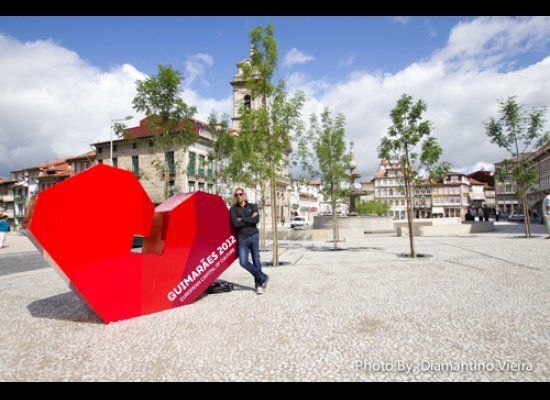
The city of Guimarães, Portugal has been given the title of the European Capital of Culture (ECoC) shared with Maribor, Slovenia this year. This title is expected to attract tourism and re-inspire Portugal, drawing euro support to the country's struggling economy.
With an unemployment rate hovering around 15% and with an ever-growing debt-to-GDP ratio, Portugal is in dire need of financial assistance to resuscitate its economy.
The budget of €111,000,000 given to the ECoC program for Guimarães will help this city boost its tourism numbers. Thirty percent of this grant comes from the Portuguese Ministry of Culture and Tourism, and the balance comes from the European Union community funds.
The question remains: Is this the best way to focus financial support during this economic crisis for a country or even a city?
History of GuimarãesGuimarães is known as the cradle of the country, partially in thanks to it being the birthplace of the first King Alfonso Henriques. The motto of the city reiterates this so-called birthright, reading, "Portugal was Born Here." The city is located just southeast of the third-largest city in the country (Braga) and is engulfed by the mountains of the Minho region.
The specialized building techniques developed here during the Middle Ages have made their mark in African territories and much of the New World. Exploring Guimarães, one can easily chronicle the medieval past that is interwoven into the fabric of the architecture and infrastructure of the former textile focused city.
Despite being a past powerhouse of the industry, Guimarães is like most other textile-focused cities: It has seen the industry lost to the Far East. Abandoned factories and empty warehouses throughout the city are great illustrations of what the Portuguese economy has recently become as a result of financial woes.
With half of the city's inhabitants under the age of 30, Guimarães is currently considered one of the youngest cities in all of Europe. The hope of a new Guimarães now relies on this youth population to spearhead reinventing the city.
Being an ECoCThe Greek Minister of Culture, Melina Mercouri, envisioned establishing a cultural capital in 1983. Mercouri felt that too much importance was given to the politics and economics of a country and not enough consideration was given to the preservation of culture. Mercouri's vision was to create an incentive and initiative more than an actual prize.
Being a cultural capital awards a financial allowance to invest in the winning city with the hopes of revitalizing and creating cultural ties, giving the city's inhabitants a sense of newfound pride and cultivating a sentiment of European citizenship.
As a result of Mercouri's work, the European City of Culture program was launched in 1985 with Athens, Greece as the first city nominated. In 1999, with the further formation of the European Union, the name of the award changed to what we know it as today.
The ECoC In GuimaraesWith this year's ECoC honorary distinction, Guimarães has been able to undertake a modern renaissance, injecting much-needed capital within the city. With the allocated funds from the program and with "good will" contributions from local businessmen as well as owners of many of Guimarães' abandoned factories and warehouses, the city has initiated ways to reinvent itself.
A former leather factory that once employed 5,000 citizens and a 22,000-square-meter home textile factory has been given a face-lift to accommodate exhibits, performances, fashion shows, conferences and more. Over 1,000 creative art activities and events will be featured throughout the year in these warehouses, in the streets and in other revitalized facilities. These cultural activities will include music, literature, architecture, photography, dance performances and street art.
"The programs have been separated into four time frames, four rhythms or four beating pulses," the executive director of Guimarães 2012, Carlos Martins, explains. All the programming, events and music will reflect each of these themes.
The first of these phases is referred to as "A Time for Encounters," which happened during the winter months and was a time for reflection, openness and an opportunity to look outside oneself.
The next stage began on the first day of spring, "A Time to Create." The emotion shifted to a more adventurous spirit and embraced reinventing oneself.
The third stage is happening now during the summer months and is called "A Time to Feel." This phase encourages all to enjoy life, celebrate and to get to know the space where one lives.
The last and final stage is "A Time to be Reborn," where a feeling of revitalization is instilled in order to create the image that will remain in one's memory.
After all these phases are completed and the year has passed, Guimarães hopes to leave a long lasting effect with a new found focus, direction and a stimulated economy. Only time will tell if this prestigious award will have a long lasting effect on the economy of Guimarães.
If you are traveling this year and are looking to experience an authentic medieval city and get a cultural experience at a city recognized as the European Capitals of Culture for 2012, then Guimarães is the place for you.

